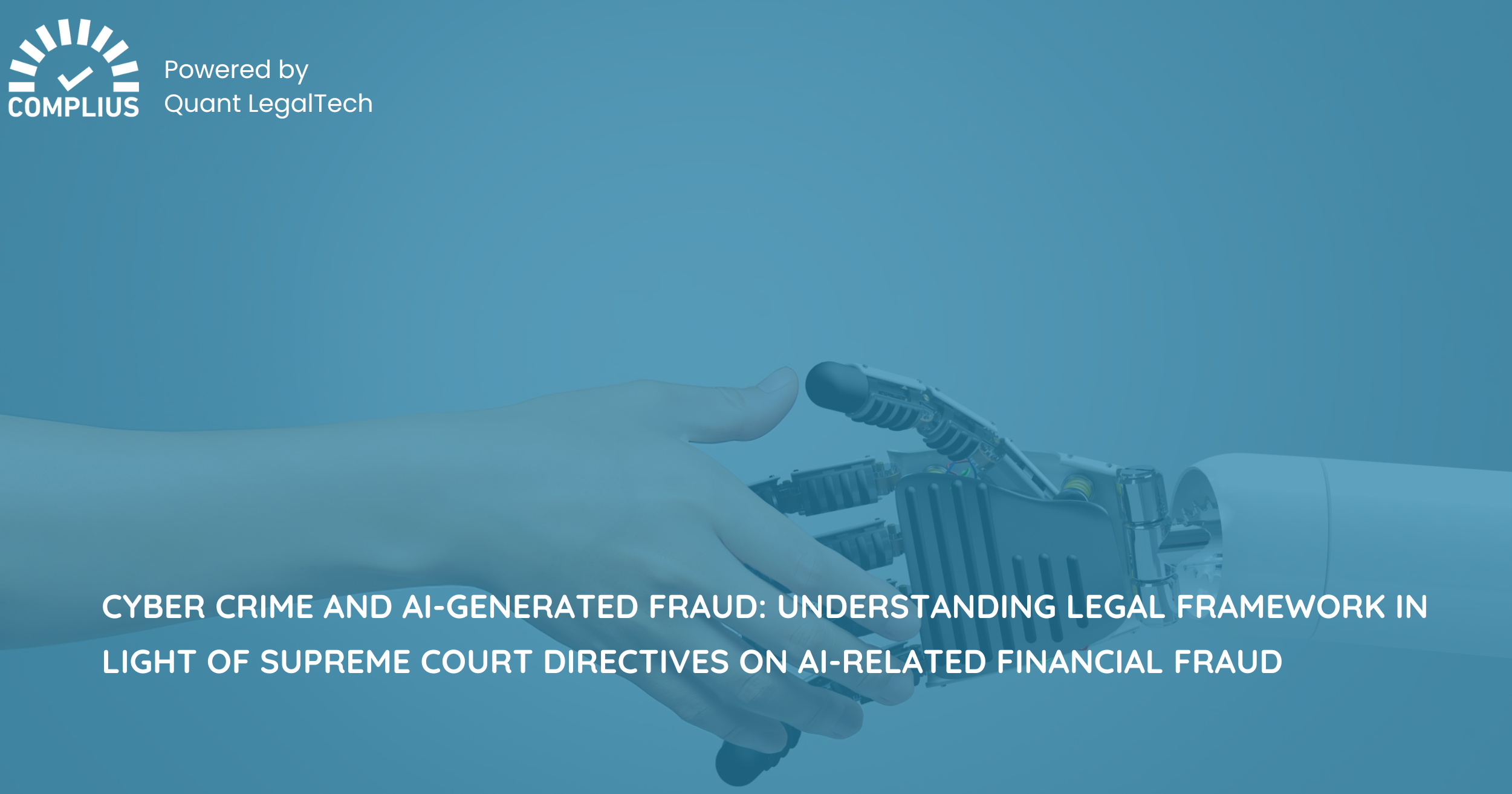Choose another country or region to see content specific to your location
Cyber Crime and AI-Generated Fraud: Understanding Legal Framework in light of Supreme Court Directives on AI-Related Financial Fraud
April 21, 2025

Introduction: Cybercrime and AI-Generated Fraud
Cybercrime has rapidly evolved alongside technological innovation, with artificial intelligence (AI) now at the forefront of both progress and peril. While AI enhances productivity, personalisation, and security in countless ways, it has also become a powerful tool for cybercriminals, fundamentally changing the landscape of financial fraud. Today’s fraudsters leverage AI to automate and scale attacks, craft convincing phishing messages, and generate deepfakes synthetic audio, video, or images that can impersonate individuals with startling accuracy. These technologies have enabled new forms of identity theft, account takeovers, and social engineering scams, making financial fraud more sophisticated and harder to detect than ever before. The rise of AI-generated fraud has alarmed financial institutions and regulators worldwide, as even robust security measures like biometrics are now being circumvented by deepfake technology. As a result, addressing AI-driven financial crime has become a top priority for banks, businesses, and governments, who must now navigate an ever-shifting threat landscape where the line between genuine and fraudulent activity is increasingly blurred.
Supreme Court’s Role in Addressing AI-Enabled Financial Fraud
Recognising these emerging threats, the Supreme Court of India has played a pivotal role in shaping the legal framework to address AI-enabled financial fraud, emphasising the responsibility of financial institutions and the need for advanced technological safeguards.
One of the landmark judgments in this area is the Supreme Court’s ruling in the case of “State Bank of India v. Pallabh Bhowmick & Ors. (2025)”, where the Court upheld the bank’s liability for unauthorised transactions resulting from AI-enabled fraud. In this case, the fraudster impersonated a customer care executive and deceived the customer into downloading a malicious app, leading to unauthorised withdrawals. The Court emphasised that banks must deploy robust technological safeguards and cannot evade liability merely by attributing the fraud to customer negligence. This judgment reinforced the principle that banks have a heightened duty of care to protect customers from AI-driven fraud, especially as mobile numbers and digital authentication methods become more vulnerable to misuse.
RBI’s Initiatives and Supreme Court’s Scrutiny of Regulatory Guidelines
Complementing judicial pronouncements, the Reserve Bank of India (RBI) has introduced innovative AI-based tools like ‘MuleHunter.AI’ to combat digital fraud involving mule accounts and bank accounts used by fraudsters to launder illicit funds.
This AI-powered system analyses large volumes of transaction data in real time, identifying suspicious patterns and enabling banks to shut down fraudulent accounts promptly. The Supreme Court’s directives align with the RBI’s proactive measures, urging financial institutions to adopt such advanced AI solutions to strengthen fraud detection and prevention frameworks. The Supreme Court has also scrutinized regulatory guidelines such as the RBI’s Master Direction on Fraud Classification, insisting that mere declarations of fraud by banks are insufficient without concrete proof.
In the State Bank of India case challenging RBI’s master direction, the Court underscored the need for banks to substantiate fraud claims with evidence, thereby protecting customers from arbitrary or unverified accusations. This judgment reinforces the principle of natural justice in fraud declarations, as further clarified by the Supreme Court’s updated directives superseding earlier guidelines from 2016, which aim to enhance transparency and accountability in fraud detection and reporting.
Moreover, the Court has acknowledged the broader regulatory challenges posed by AI in fintech and financial services.
Legal Provisions Governing AI-Related Cybercrime
From a legal standpoint, the Information Technology Act, 2000, particularly Sections 66 and 66D, continues to provide the backbone for prosecuting cybercrimes, including AI-enabled impersonation and cheating by personation. The Supreme Court’s rulings reinforce that these provisions apply robustly to AI-generated frauds, holding financial institutions accountable for lapses in security and mandating prompt remedial action. Additionally, the Companies Act, 2013, under Section 447, imposes severe penalties for fraud, which can extend to corporate failures in preventing AI-driven financial crimes.
Conclusion: A Proactive Legal Approach to AI-Related Financial Fraud
In conclusion, the Supreme Court’s directives and judgments emphasise a proactive legal approach to AI-related financial fraud. They mandate financial institutions to deploy advanced AI tools, such as MuleHunter.AI, to detect and prevent fraud while ensuring accountability and customer protection. The Court insists on evidence-based fraud declarations and highlights the importance of data privacy and ethical AI use. As AI technologies continue to advance, the legal framework in India, guided by the Supreme Court’s principles, is evolving to meet these challenges, balancing innovation with stringent safeguards to protect the financial ecosystem from emerging cyber threats. Financial institutions, regulators, and stakeholders must strictly adhere to these directives to build a resilient and trustworthy digital financial environment.